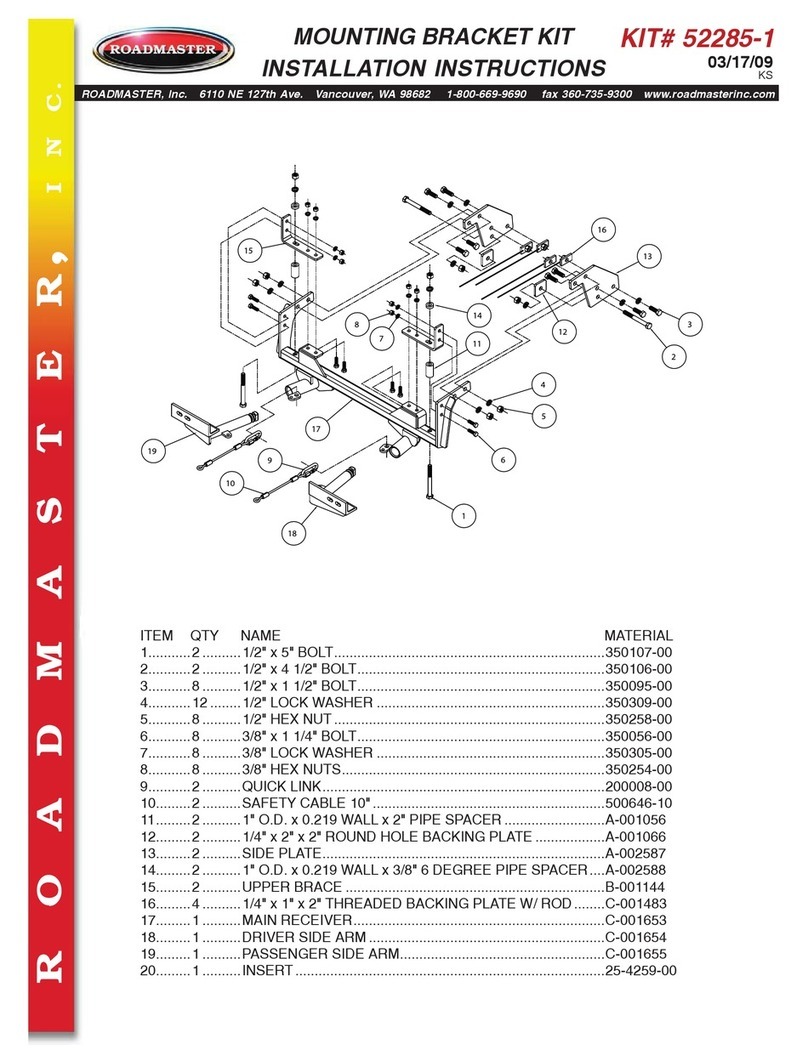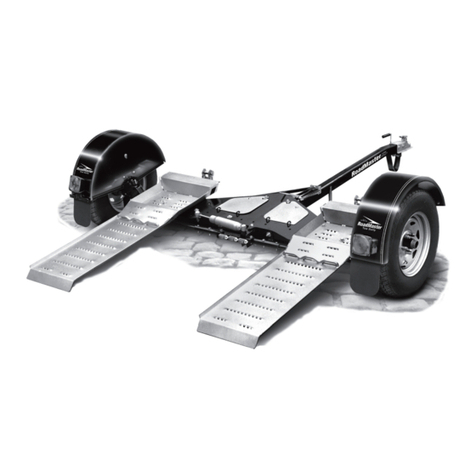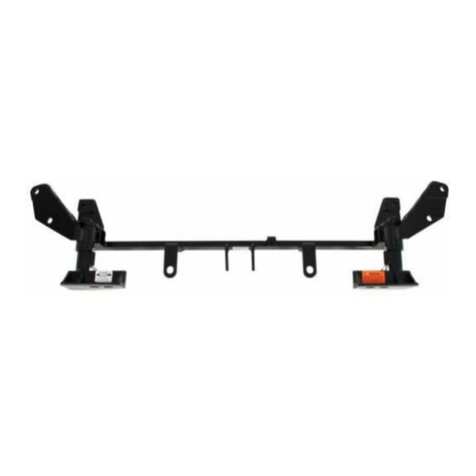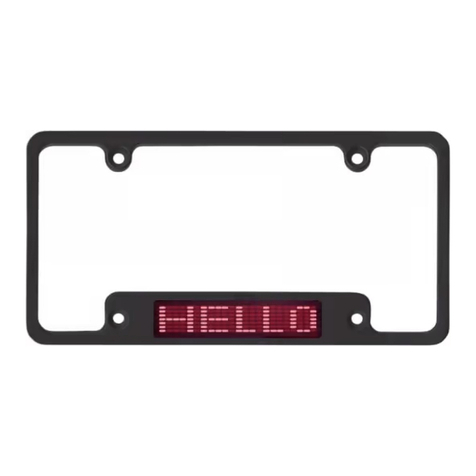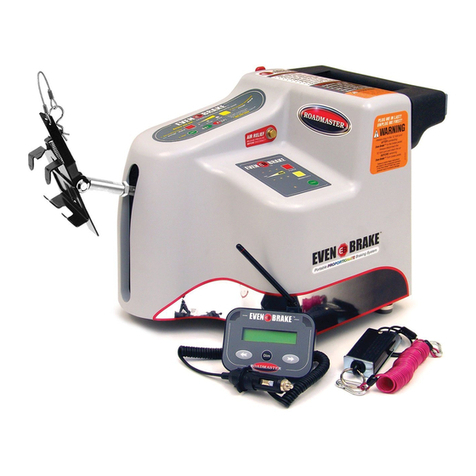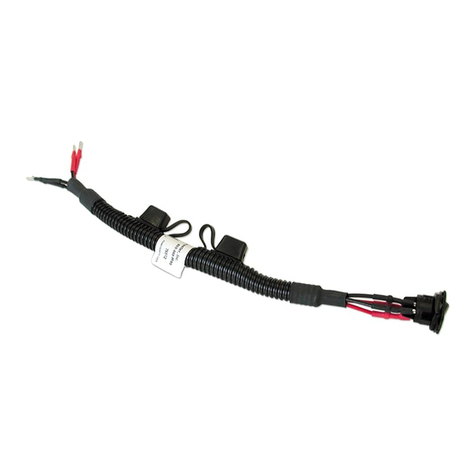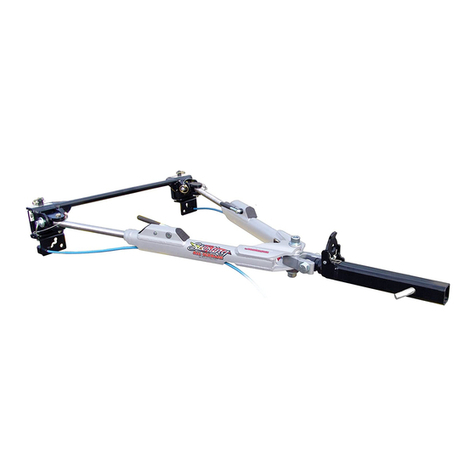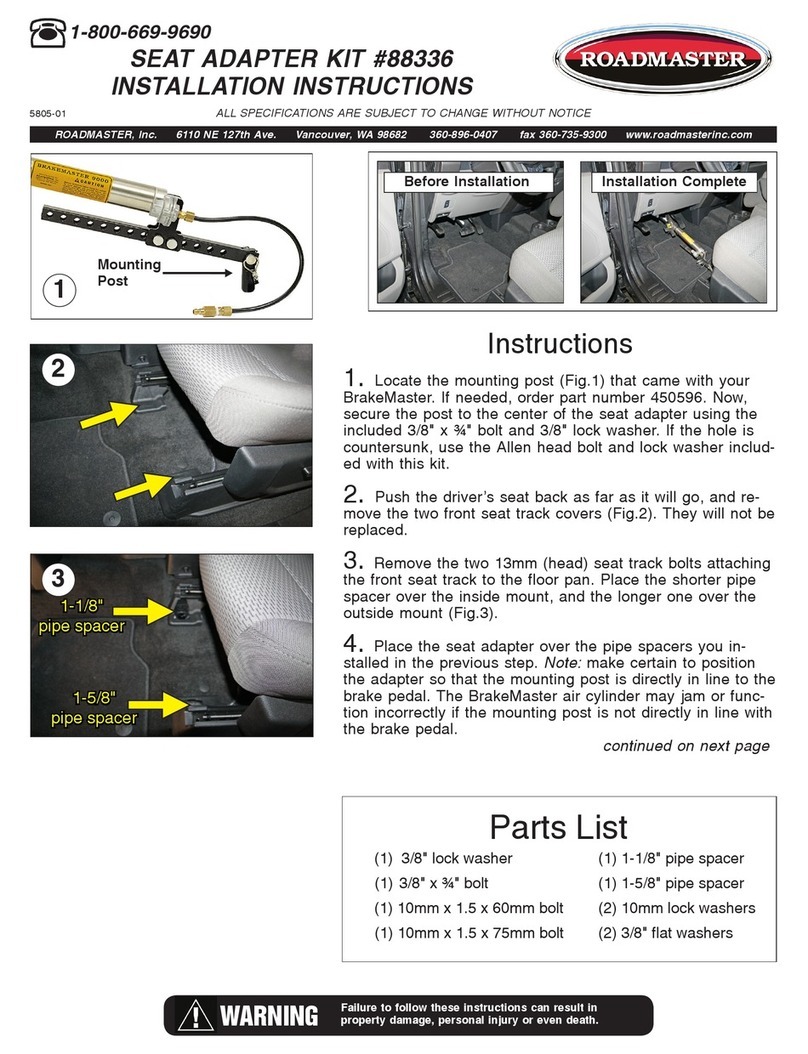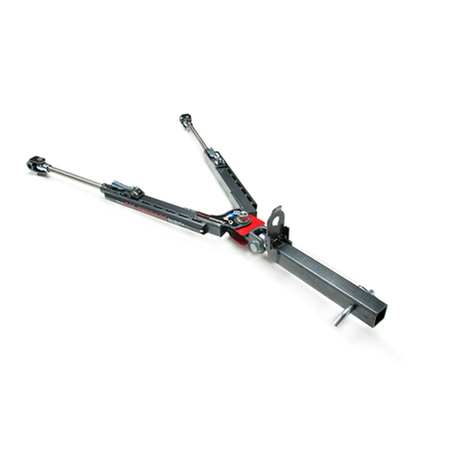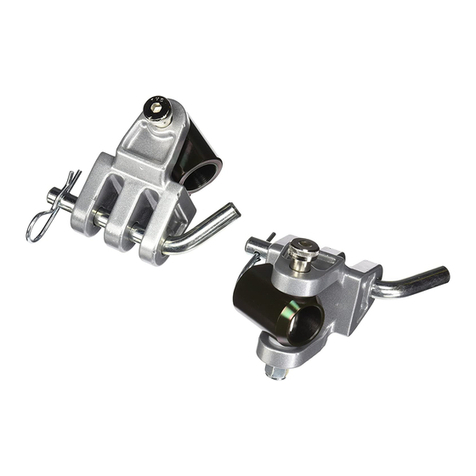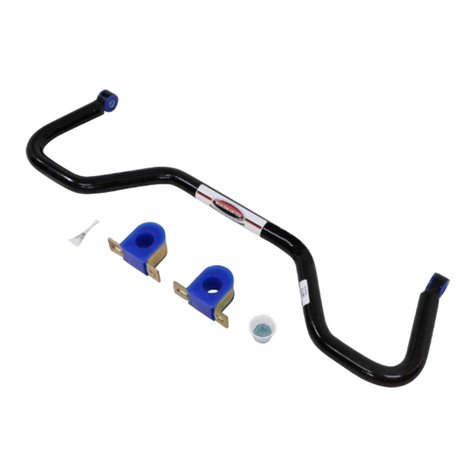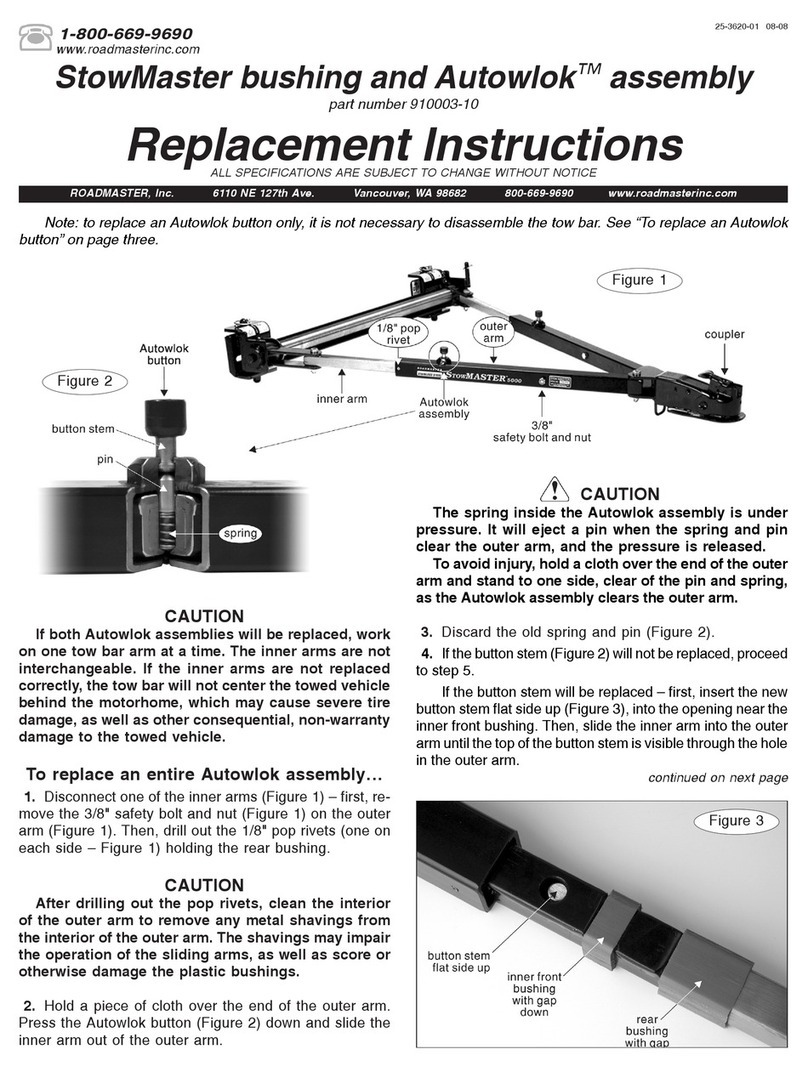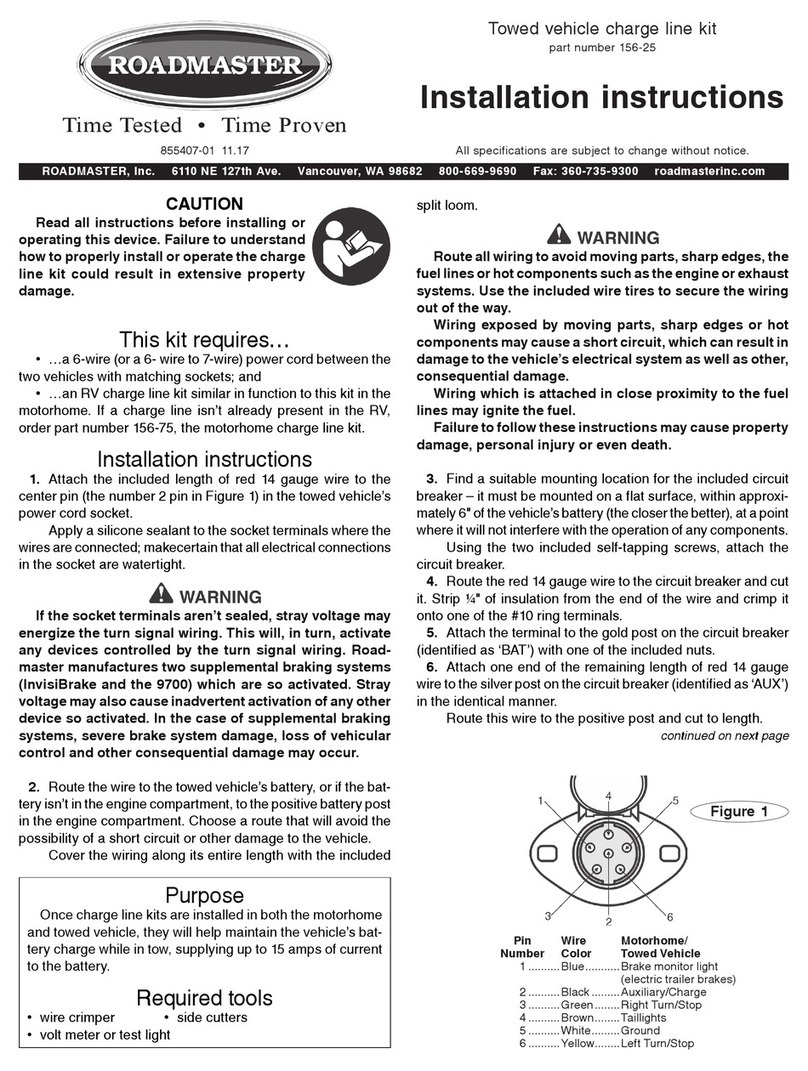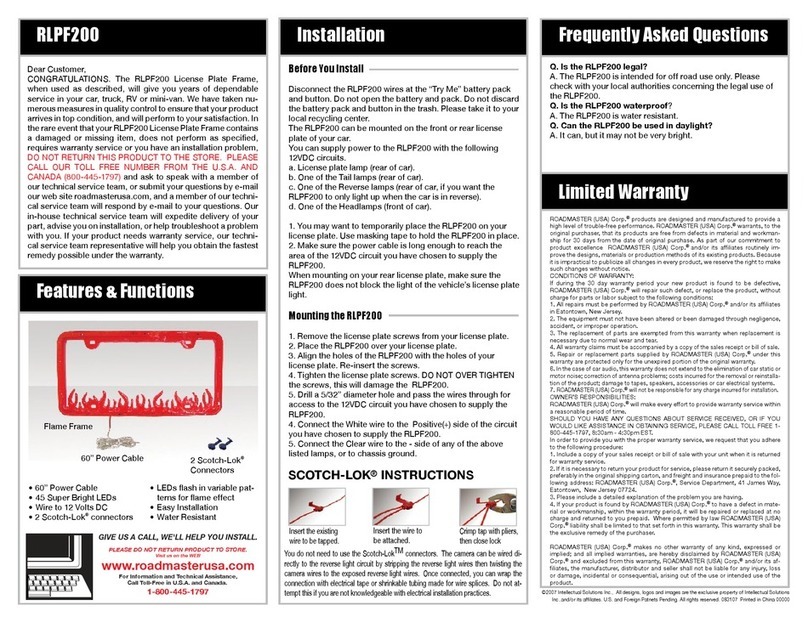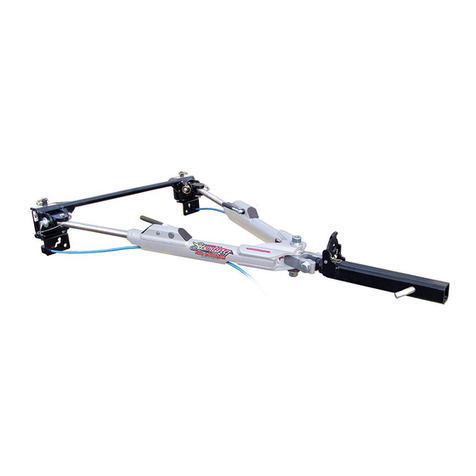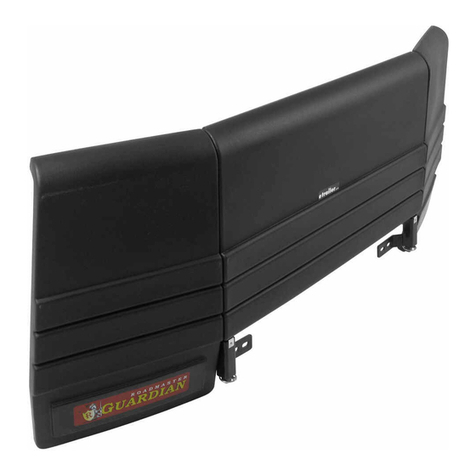
TABLE OF CONTENTS
Specifications....................................inside front cover
Safety definitions ..............................inside front cover
Components............................................................... 2
Wiring diagrams......................................................... 3
Initial Installation
Before you begin the initial installation
(installer’s checklist) ........................................... 4-5
Initial installation ................................................... 6-11
Install the break away system ............................... 6
Modifications to the
towed vehicle’s lighting system ...................... 6-7
Install the motorhome monitor
wiring harness in the towed vehicle ............... 7-8
Attach the brake signal wire............................... 8-9
Attach the firewall grommet;
attach the wiring connectors ............................ 9
Install the motorhome monitor LED.................. 9-10
Test the braking system ................................. 10-11
Day-to-Day Operation
Attach the pedal clamp....................................... 12-13
Adjust the feet and the seat pad ............................. 14
Plug in the power cord ............................................ 15
Test and adjust positioning;
deplete the vacuum in the power brakes ............ 15
Set the brake pressure ............................................ 16
Connect the wiring harness;
test the break away system............................ 16-17
Connect the motorhome monitor patch cord ........... 17
Test the braking system...................................... 17-18
Protection Modes
Extended braking protection.................................... 18
Responding to an audio alert .................................. 18
Quick Reference Checklist
Connecting the 9700 ............................................... 19
Disconnecting the 9700 ........................................... 20
Troubleshooting .................................................. 21-22
Ford ‘neutral tow’ vehicles.................................. 23-24
Optional equipment.................................................. 25
Limited warranty ...................................................... 26
Index........................................................................ 27
CAUTION
Not for use on older vehicles without power
brakes. The 9700 is designed to work with vehicles
that have a power brake system (even though the
power brakes are not activated while towing). Using
the 9700 on vehicles that do not have power brakes
will result in over-braking and severe non-warranty
brake damage.
CAUTION
Do not install the 9700 in a vehicle with an ‘ac-
tive’ braking system.
‘Active’ (or, ‘continuous power assist’) braking
systems are a safety feature on some new ve-
hicles. This feature allows the brakes to always
have power, even with the ignition off. The only
supplemental braking system that ROADMASTER
manufactures for these vehicles is BrakeMaster,
with the addition of a Brake Pressure Reducer (part
number 900002).
If any ROADMASTER supplemental braking sys-
tem other than a BrakeMaster with a Brake Pres-
sure Reducer is installed, the vehicle will brake
with excessive force, which will damage the tires.
Other non-warranty damage may also occur.
It is the owner’s responsibility (or if profession-
ally installed, the installer’s responsibility) to de-
termine if the vehicle being equipped with supple-
mental brakes has an active braking system — refer
to the owner’s manual, the vehicle manufacturer or
the dealership.
ROADMASTER expressly disallows any and all
claims relating to tire damage, brake damage, or
any other damage to vehicles with ‘active’ braking
systems caused by: 1) installation of any ROAD-
MASTER supplemental braking system other than
BrakeMaster; or 2) failure to install a Brake Pres-
sure Reducer with the BrakeMaster.
If a charge line kit is installed in the towed vehi-
cle, apply a silicone sealant to the socket terminals
where the wires are connected. Otherwise, stray
voltage may energize the turn signal wiring. This
will cause inadvertent activation of the supplemen-
tal braking system. Severe brake system damage,
loss of vehicular control and other consequential
damage may occur.
1
